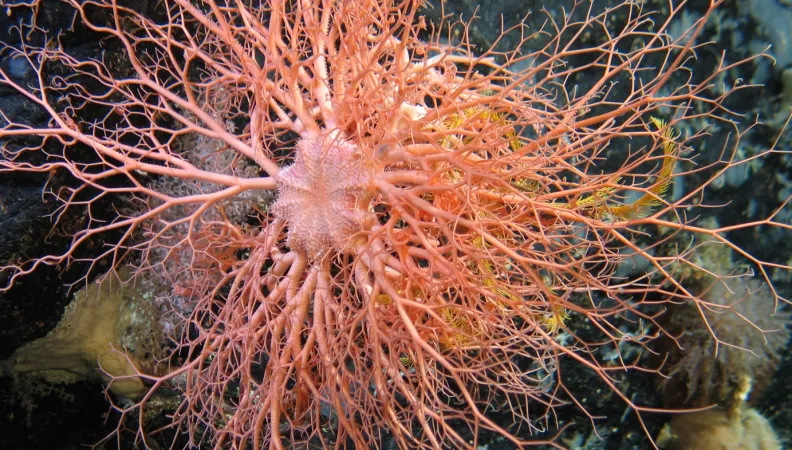Share the page
Conserving and sustainably exploiting seamount ecosystems and hydrothermal vents in the high seas
Project


-
Project start date
-
Status
Completed
-
Estimated date of project termination
-
-
Project financing date
-
-
Financing duration
-
3 years
-
Type of program
-
FFEM
-
Global financing amount
-
€ 9000000
-
FFEM financing amount
-
€ 1300000
-
Project lead member institution(s)
-
Ministry for Europe and Foreign Affairs
-
Country and region
-
Indian Ocean, Multi-country
-
Location
-
South-west Indian Ocean
-
Type of financing
-
Beneficiaries
-
International Union for Conservation of Nature (IUCN) Global Marine and Polar Programme
Improving the management of high seas marine ecosystems is essential. To do so, we need to deepen our scientific knowledge and the way it is managed. To this end, the FFEM is supporting a conservation project for the biodiversity of seamount and hydrothermal vent ecosystems in the south-west Indian Ocean.
Context
The high seas shelter rich and unique ecosystems, particularly around seamounts and hydrothermal vents. These environments are particularly vulnerable to over-fishing and mineral prospecting.
The protection of high seas biodiversity is increasingly important in view of the growing number of projects exploiting the deep natural resources and the many pressures on the water column (pollution, over-fishing). This project, which is supported by the FFEM, aims to promote biodiversity conservation together with a sustainable exploitation of the south-west Indian Ocean, a region of strategic importance.
Description
- Increasing knowledge on seamount and hydrothermal vent ecosystems (links with economic activities and coastal ecosystems).
- Improving and strengthening the governance frameworkfor the high seas.
- Developing concrete proposals and operational tools for the conservation and sustainable utilisation of maritime areas beyond national jurisdictions (ABNJ) in the region.
- Drawing the attention of political decision-makers, of the fishing industry, of the wider public of the coastal states, of the “user” states, and of the international community to the importance of preserving marine biodiversity in the ABNJ, and capitalising upon all the scientific, technical and political results gleaned from the project.
Impacts
- Identification of sites facing particularly severe challenges around their protection/management.
- Developing the scientific capabilities of the region and the partners.
- Bolstering regional and local capabilities for governance of ABNJs through training programmes.
- Sharing and capitalising upon project experiences in scientific, technical, international policy and regional contexts.
- Developing measures for support, monitoring, oversight and surveillance.
- Running a feasibility study on setting up financial instruments.
Exemplary and innovative characteristic
Supported by the FFEM, the goal of this project is to pave the way in terms of governance. Its innovative and exemplary nature can be seen in the geographical and thematic kaleidoscope it encompasses: the deep ecosystems outside national jurisdictions - which are amongst the least understood of the planet - and all their teeming biodiversity.


